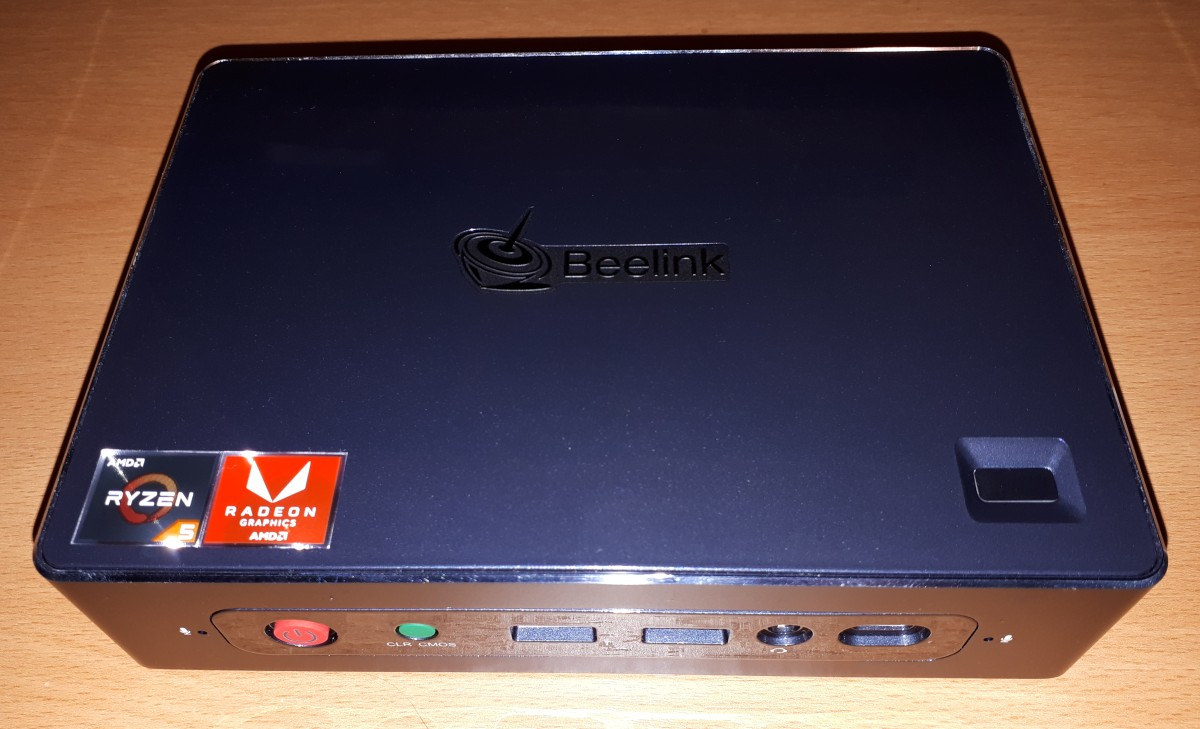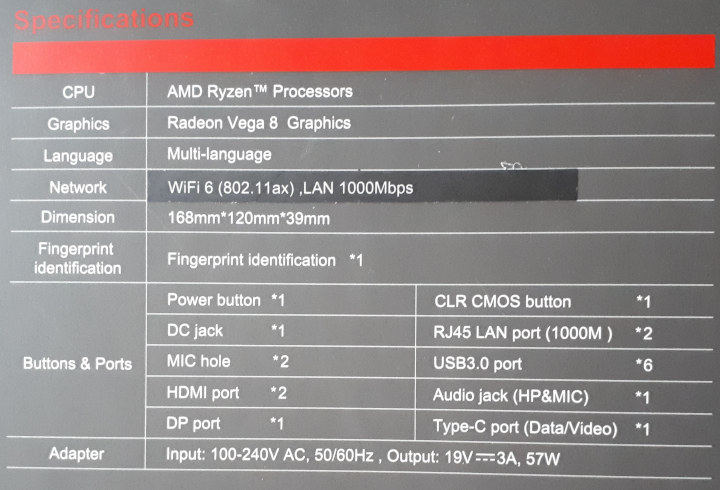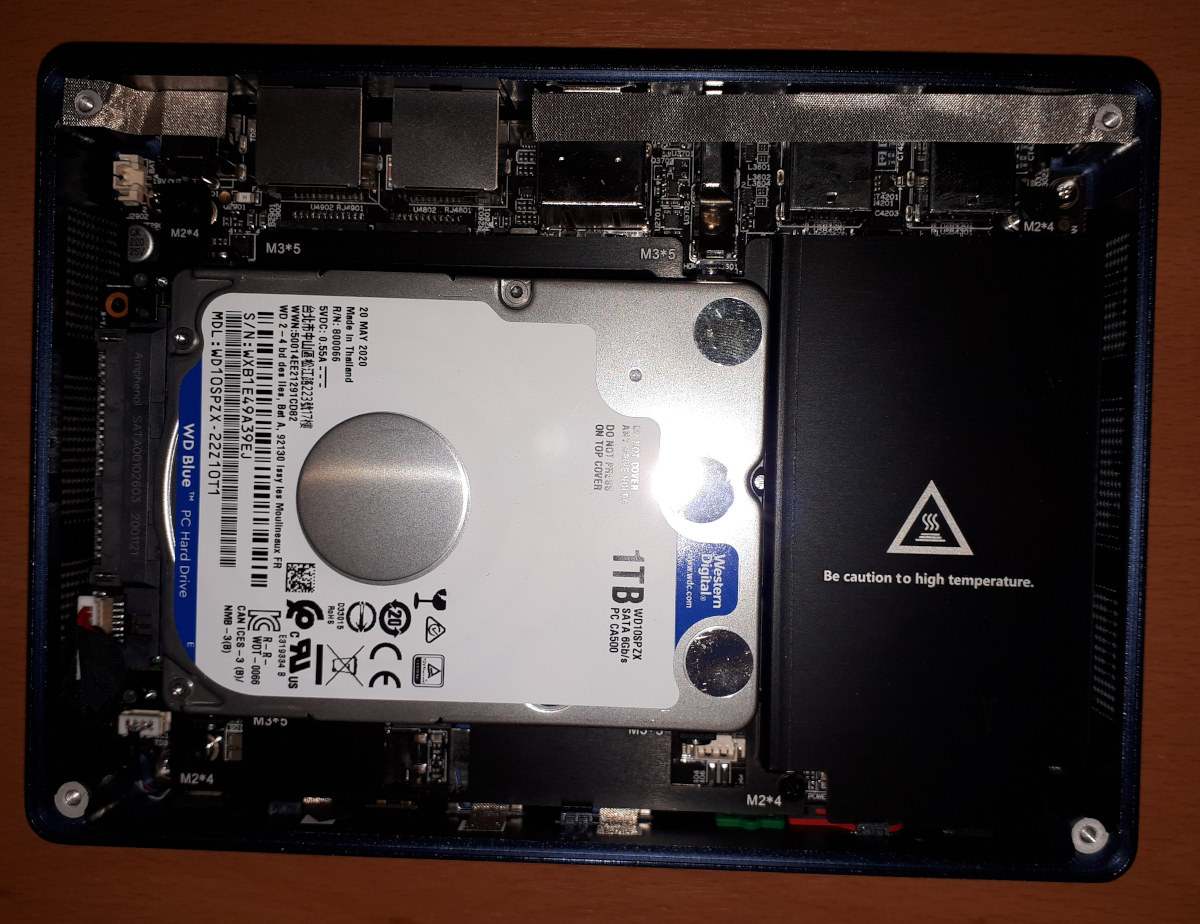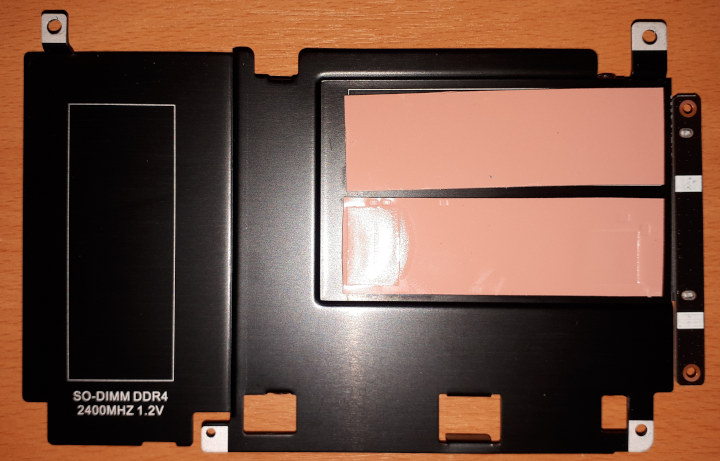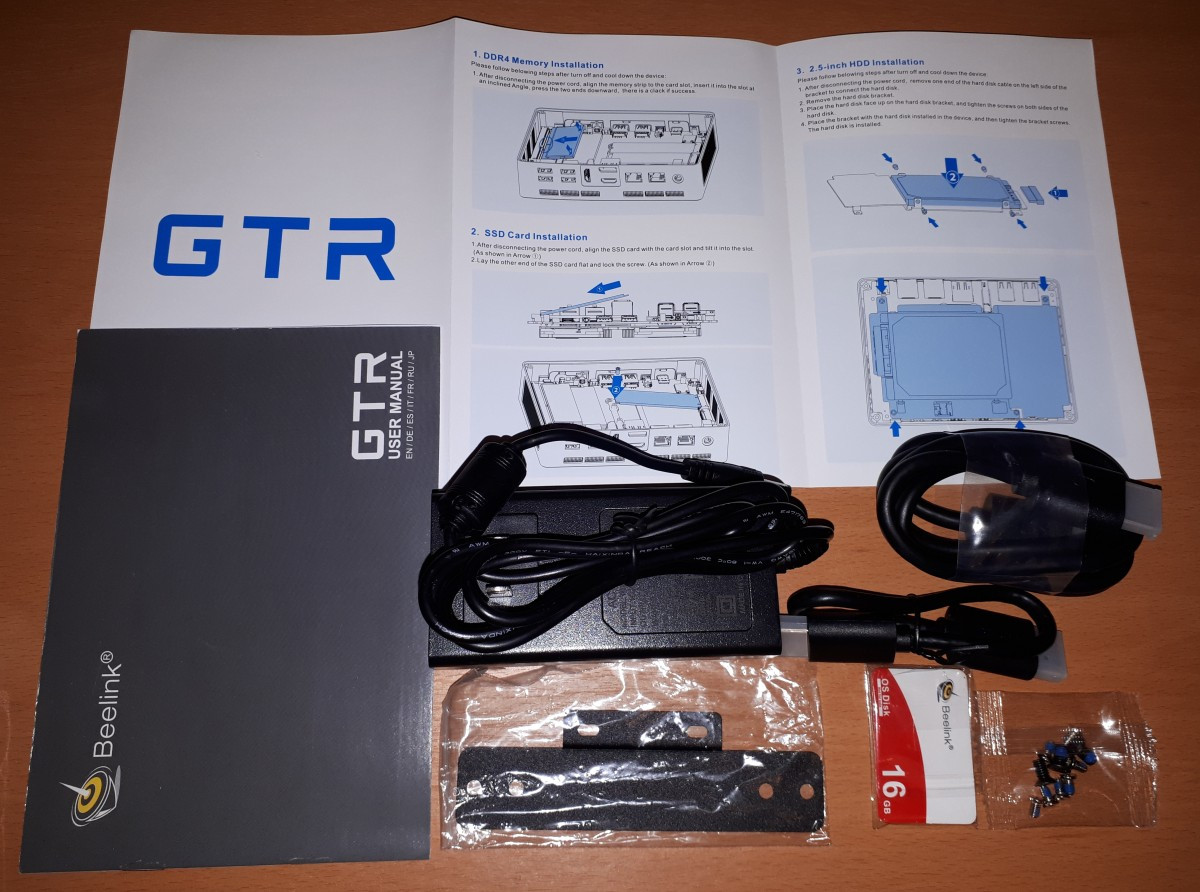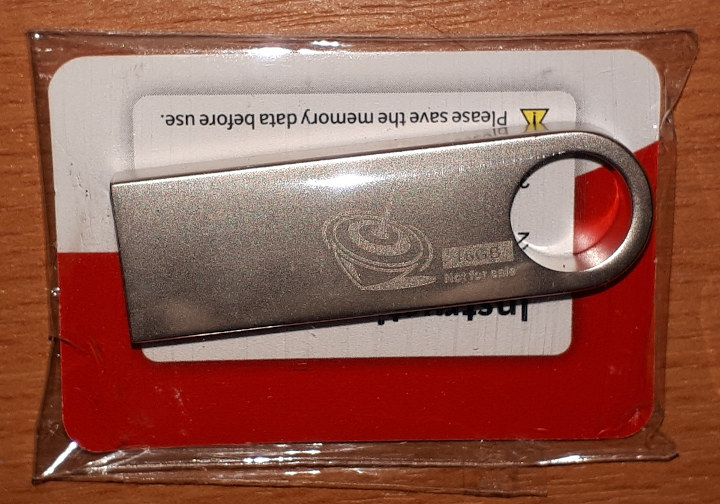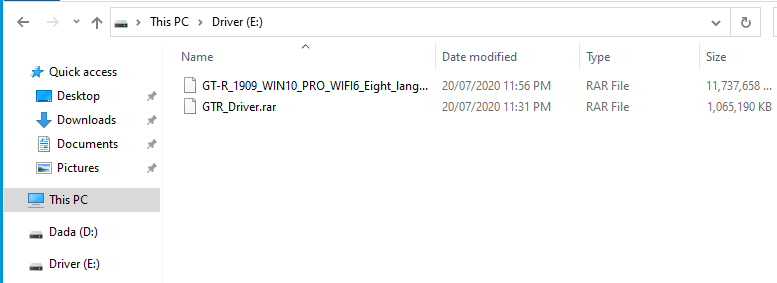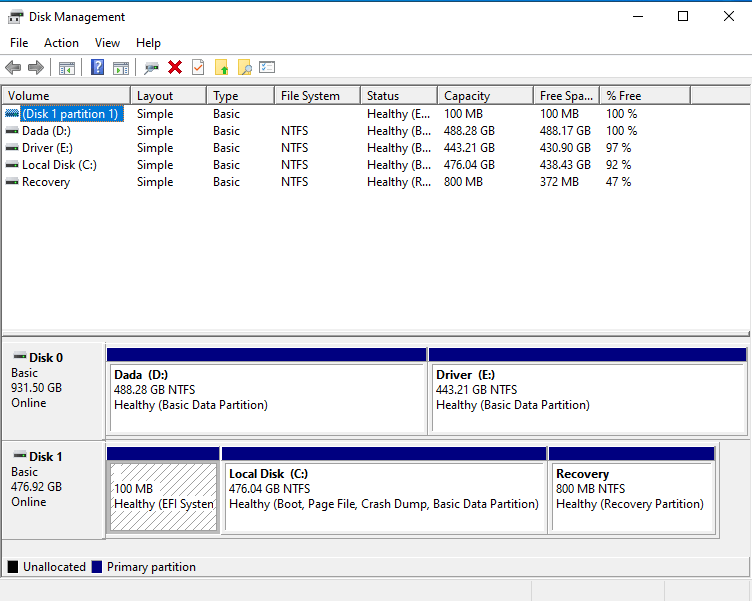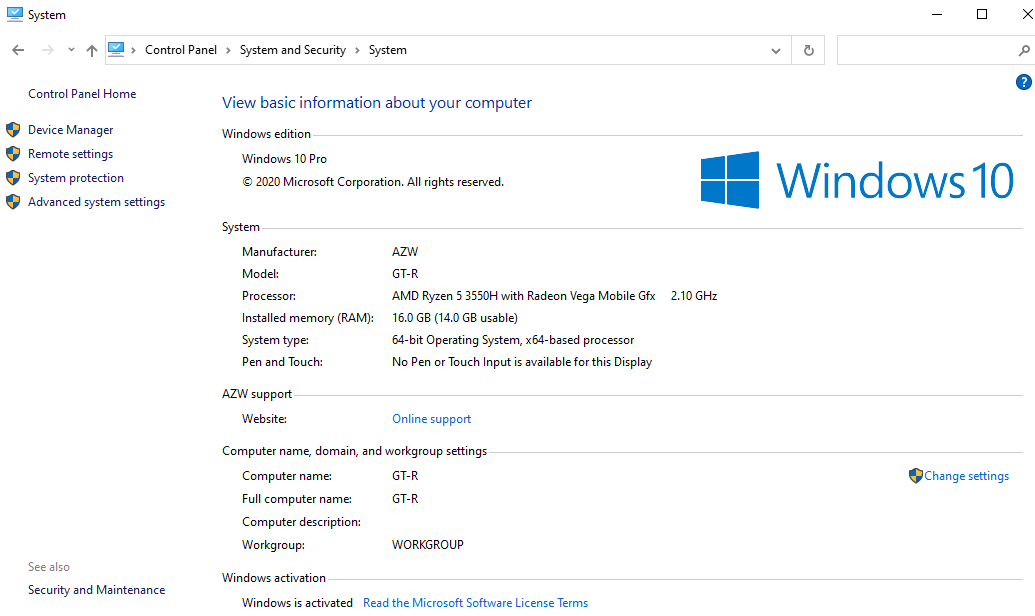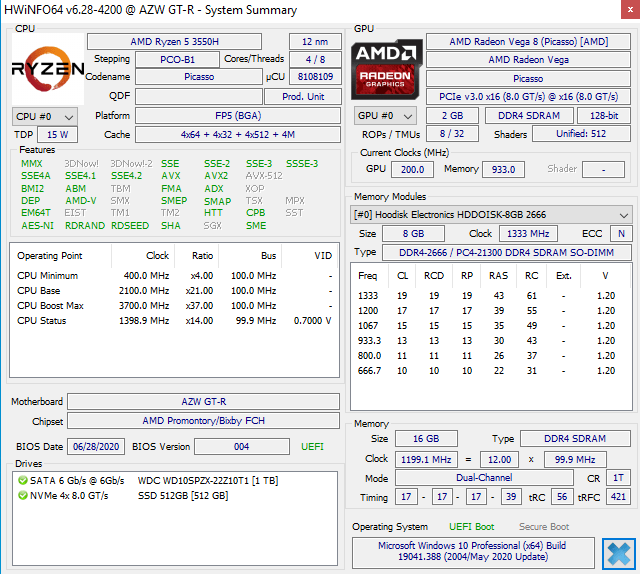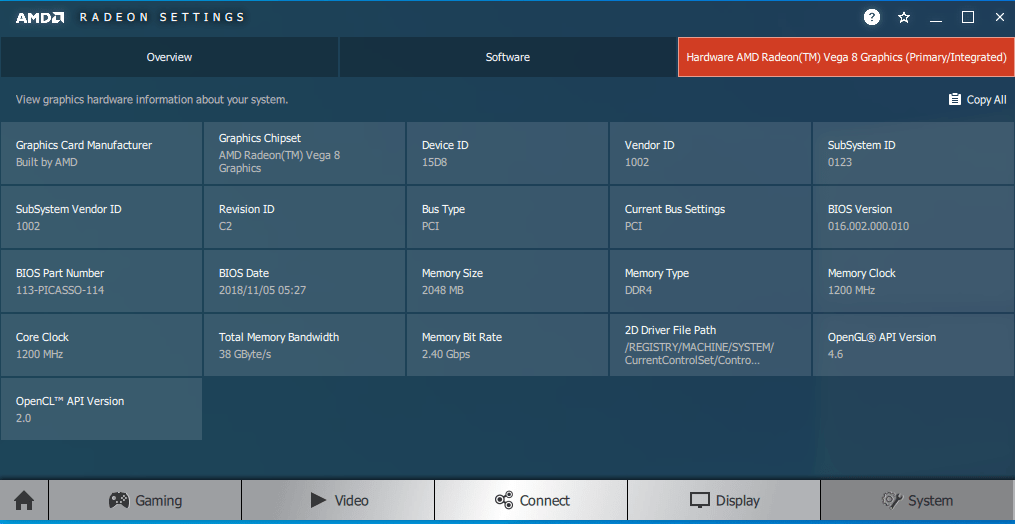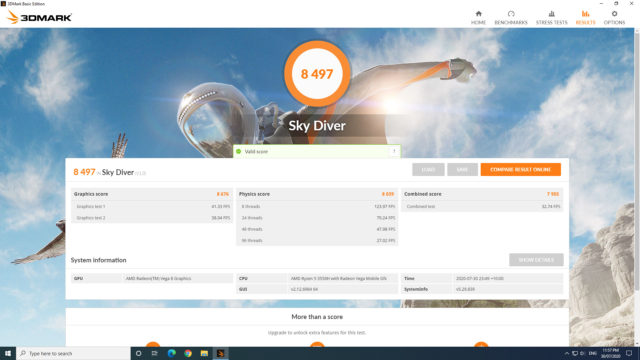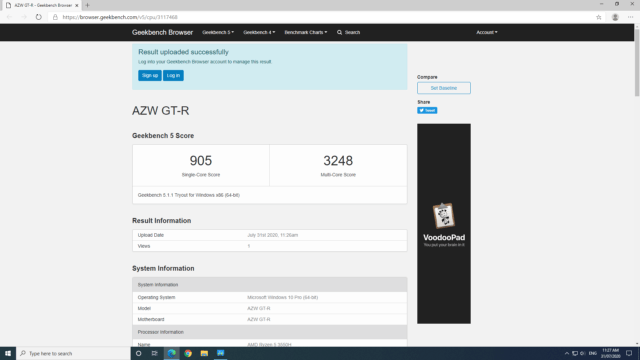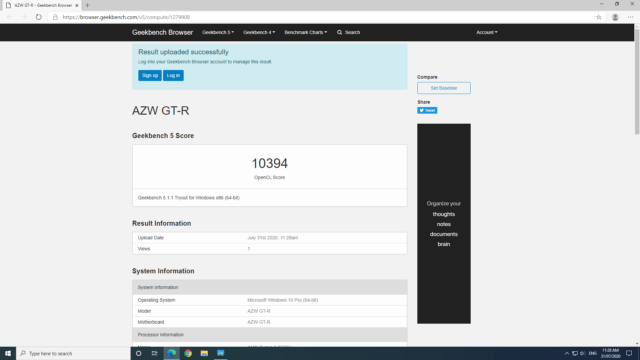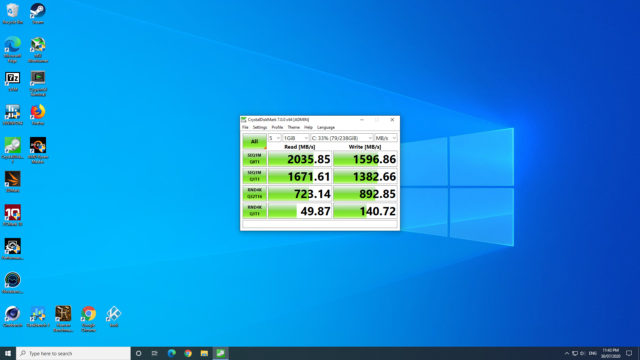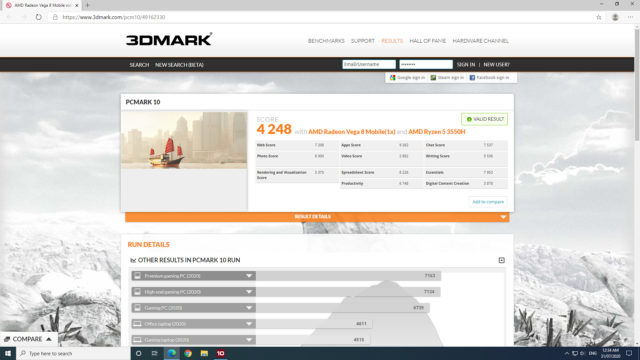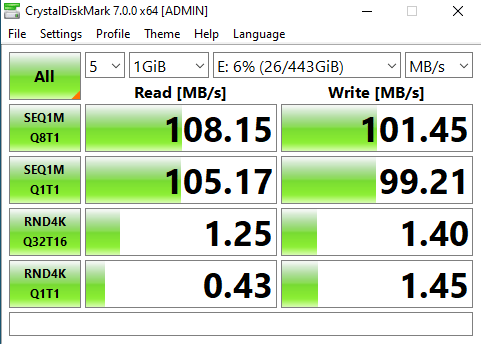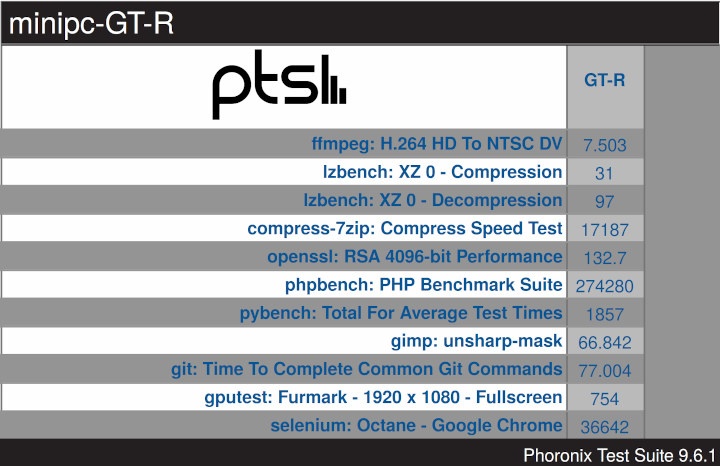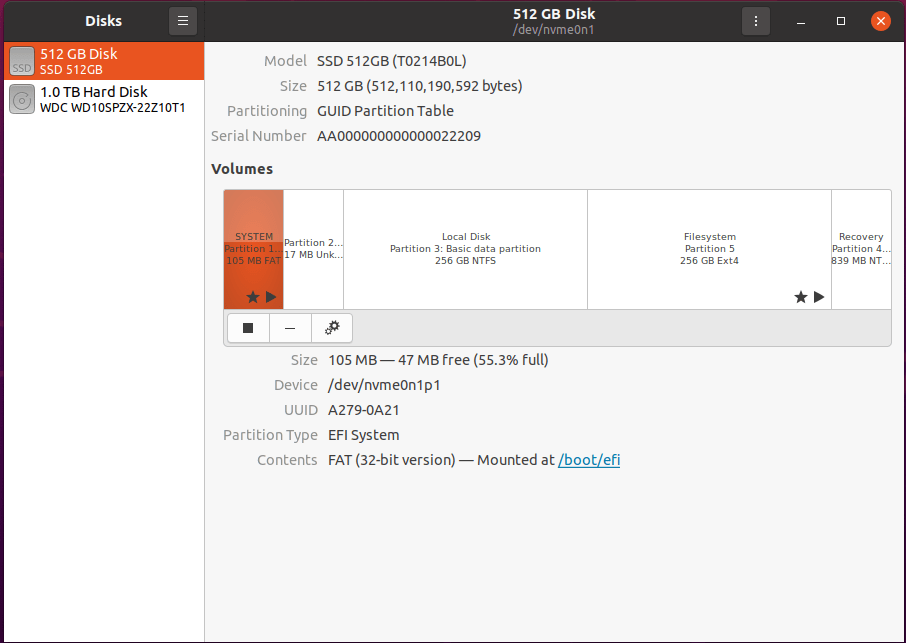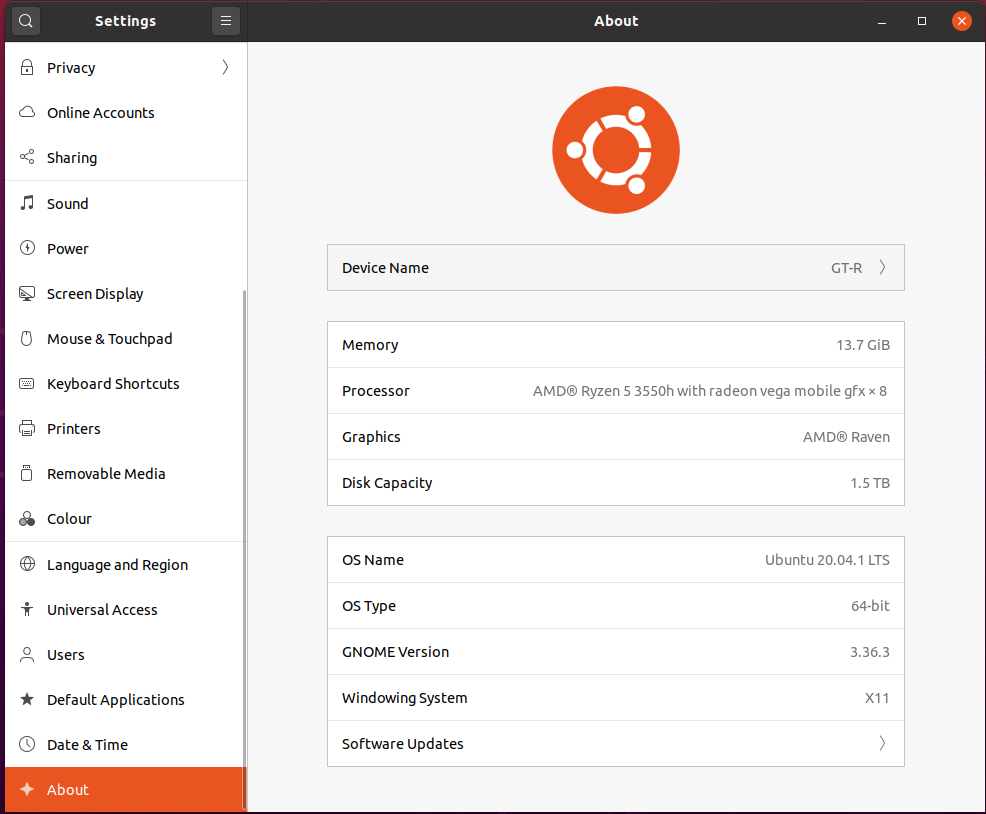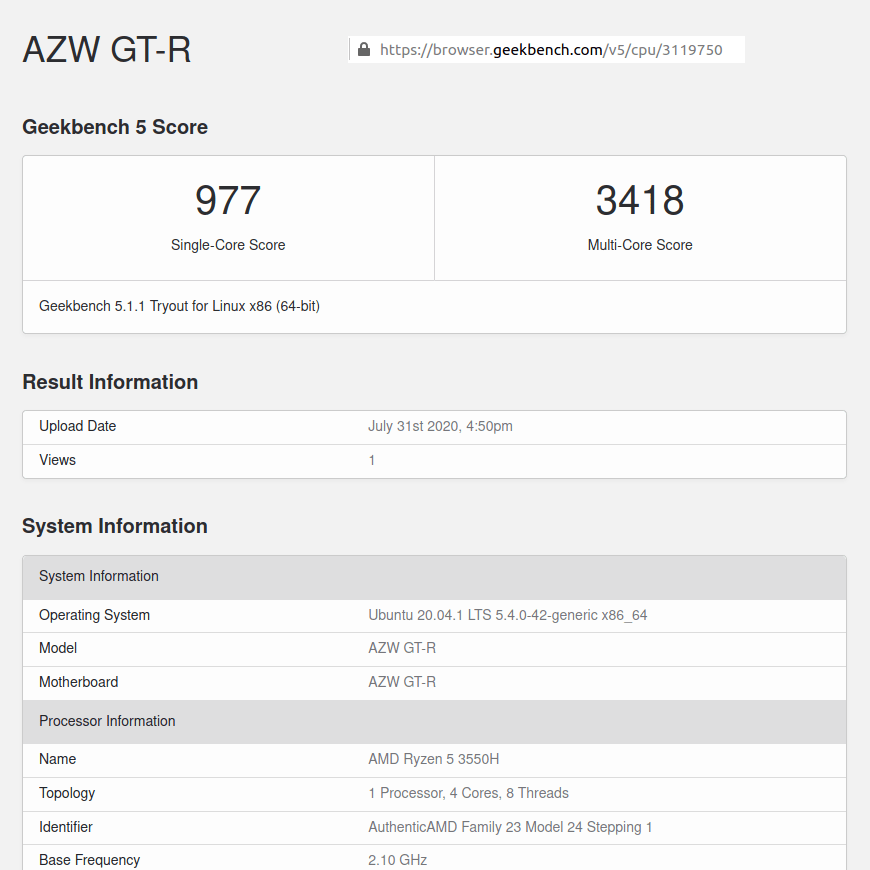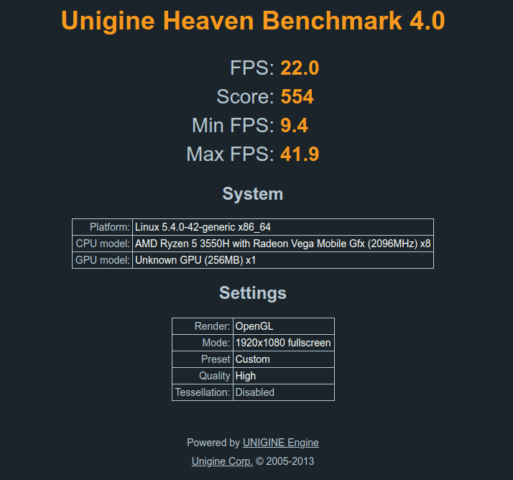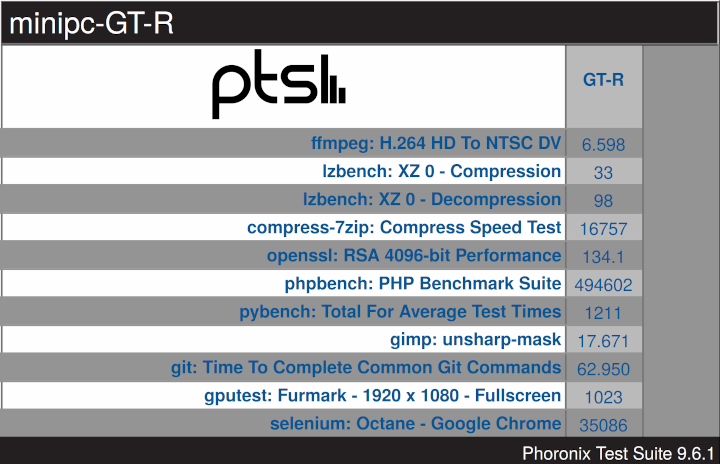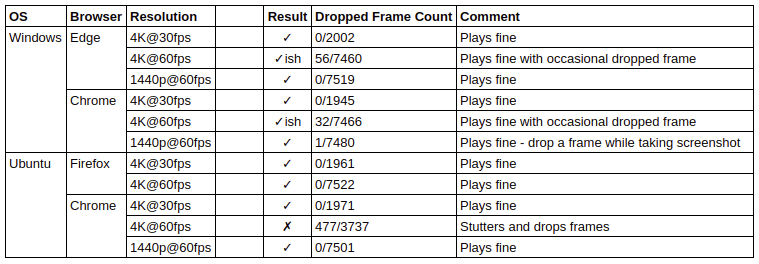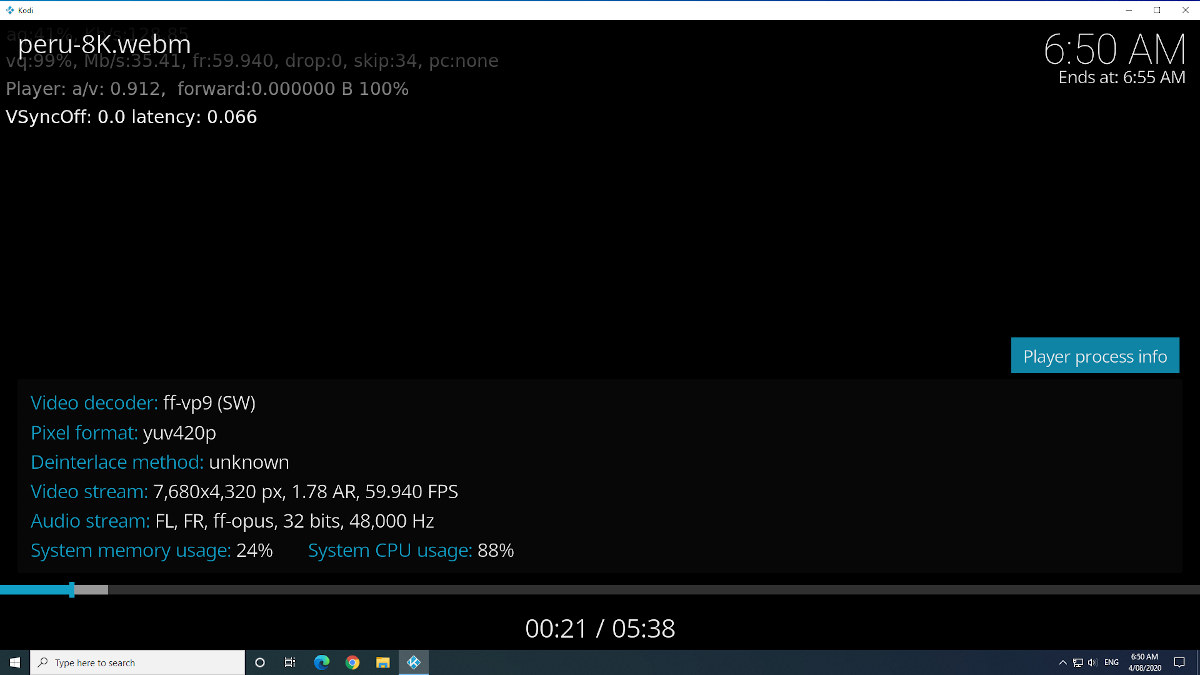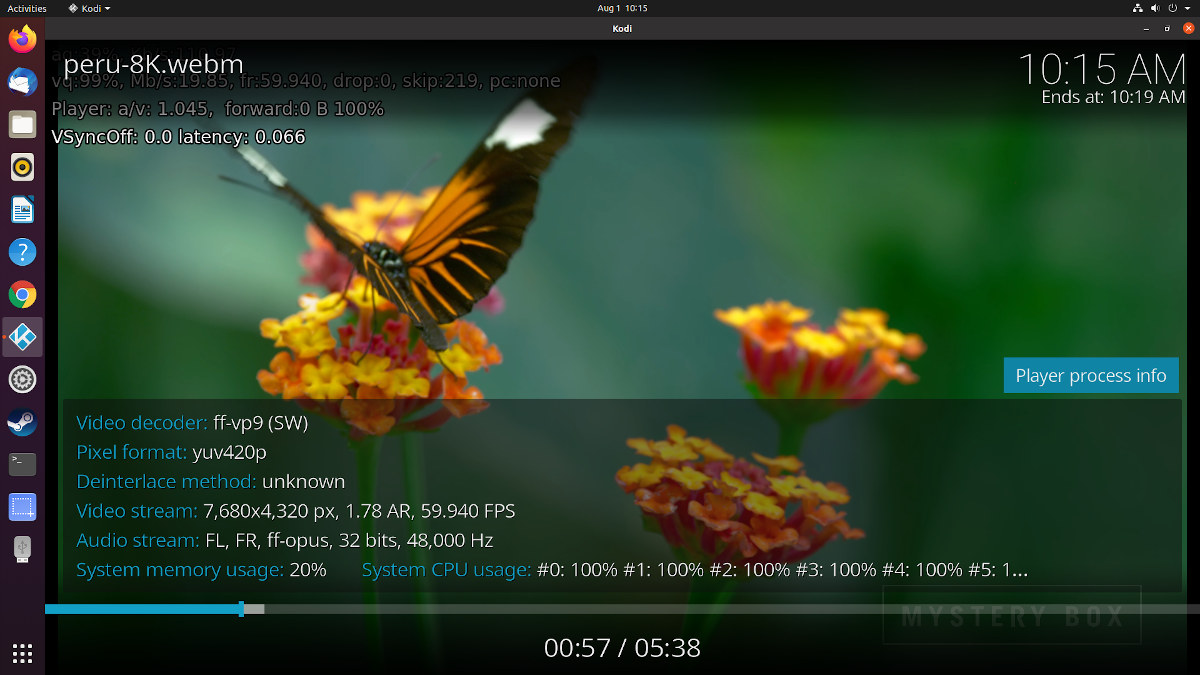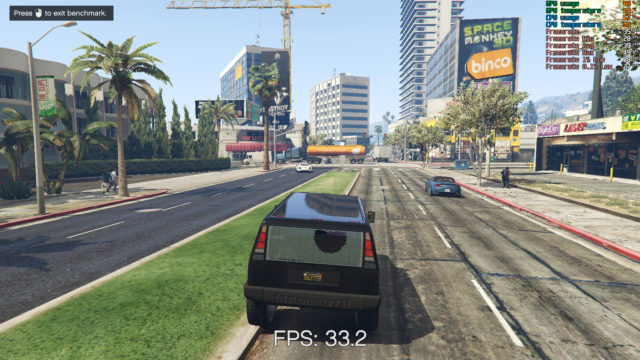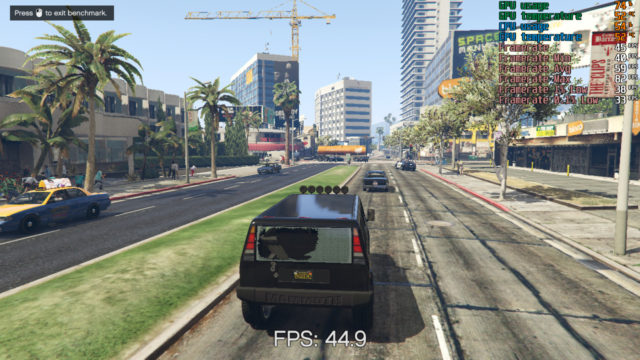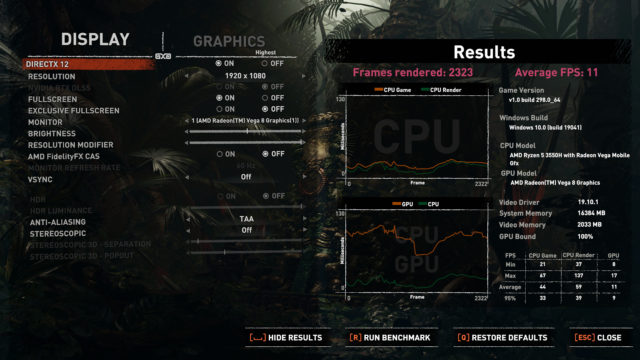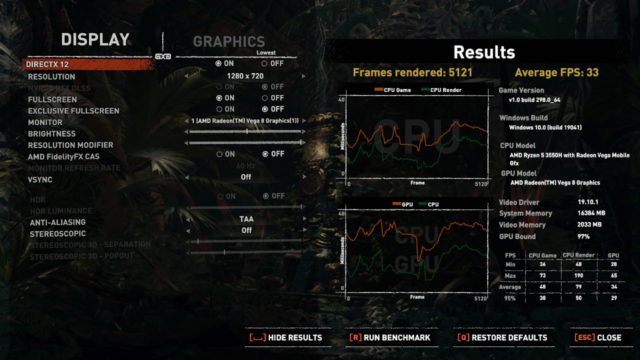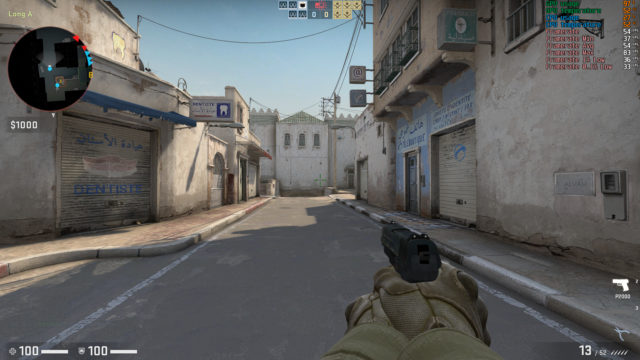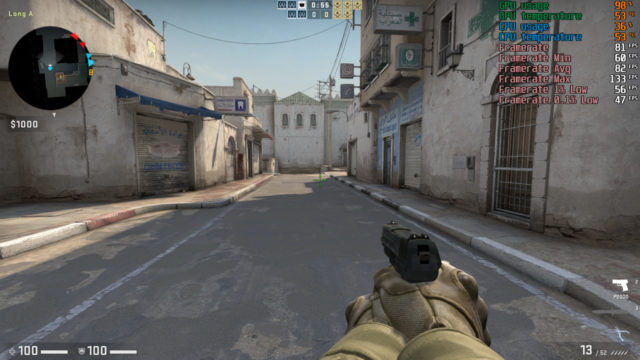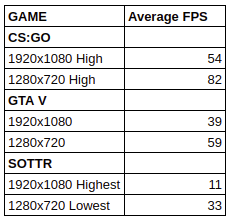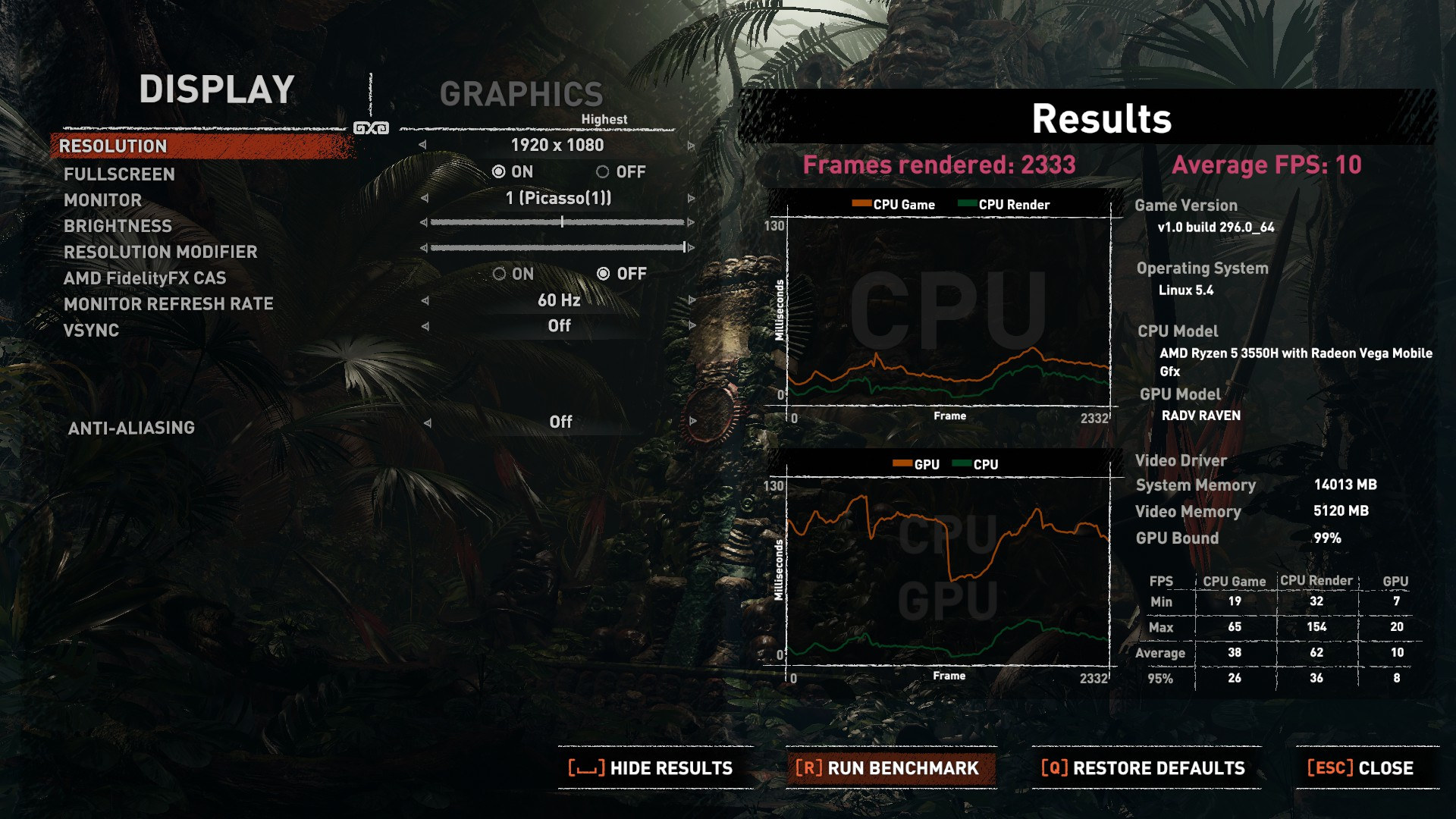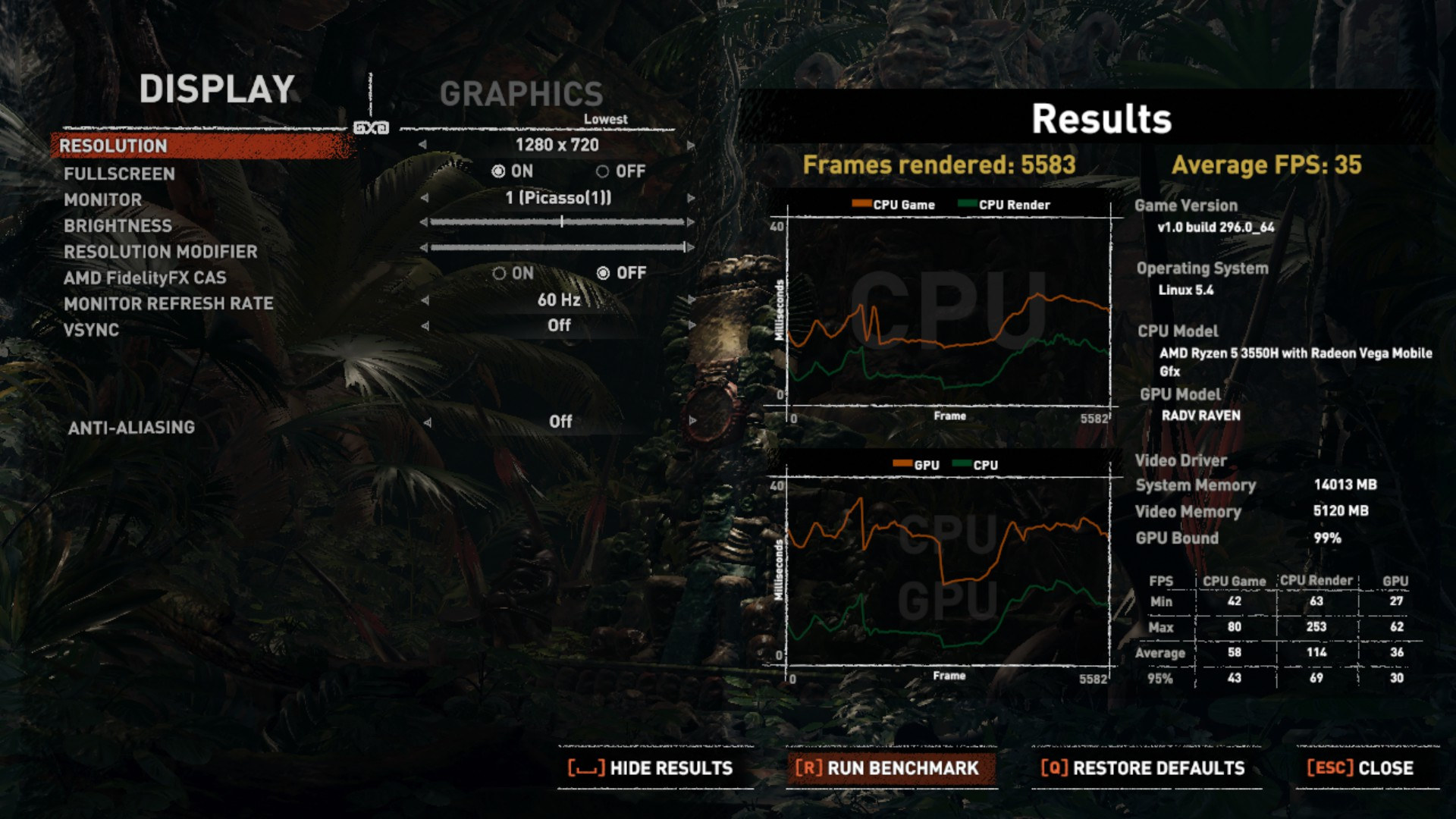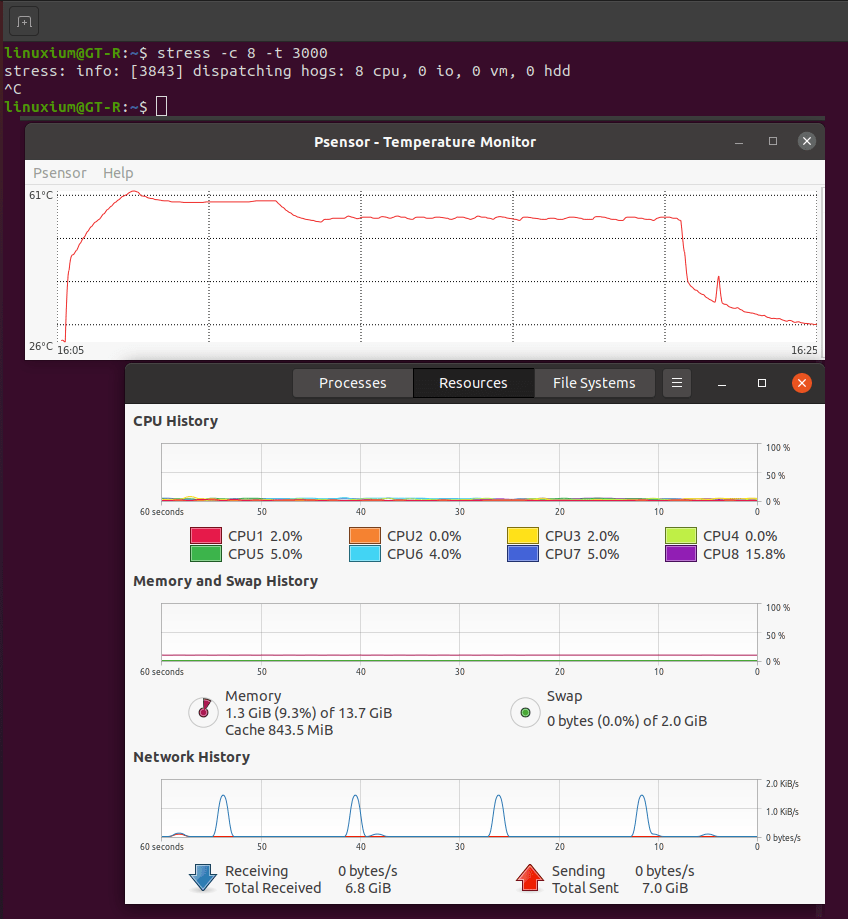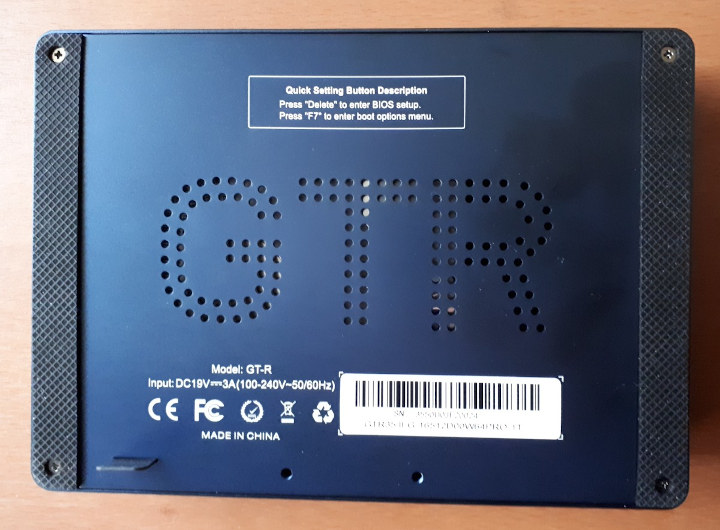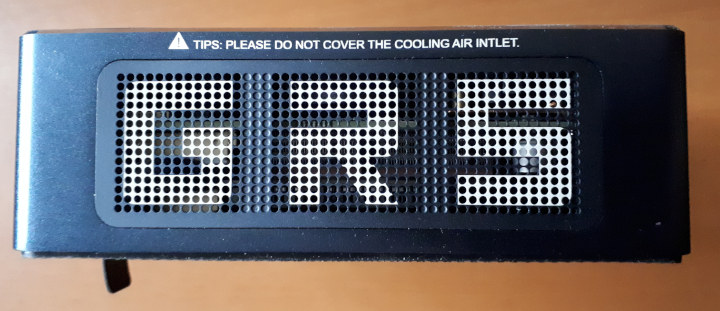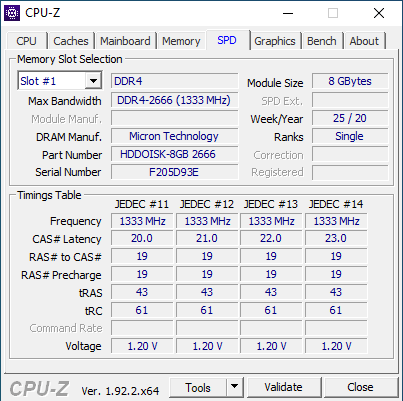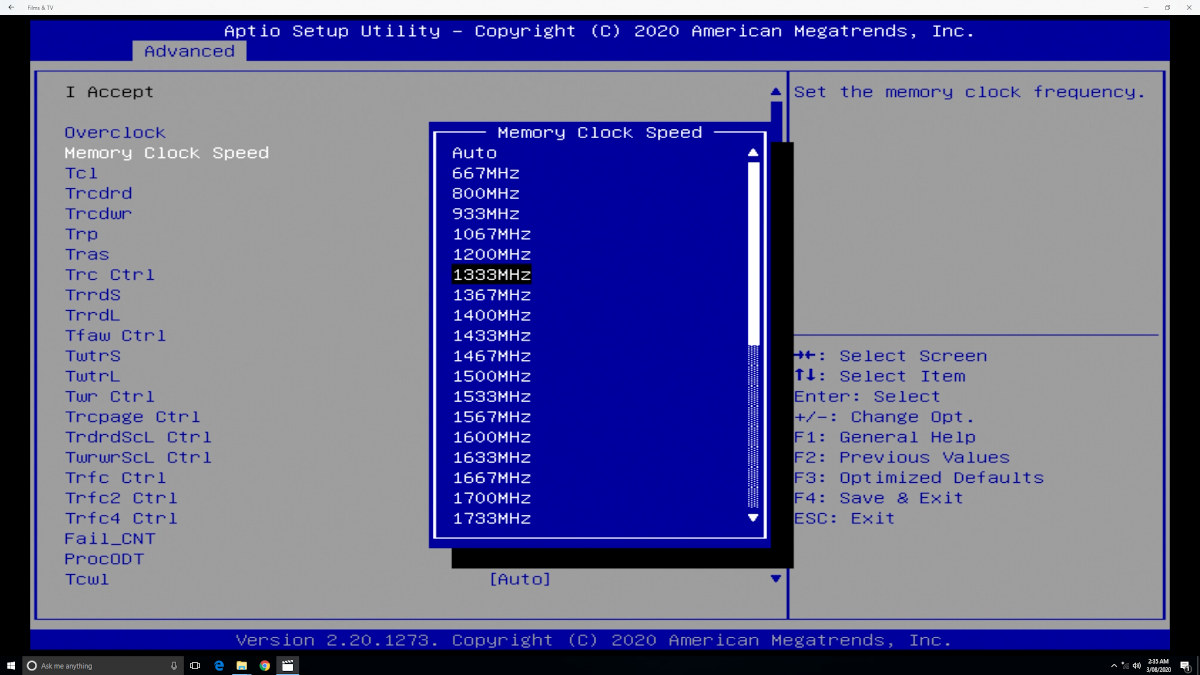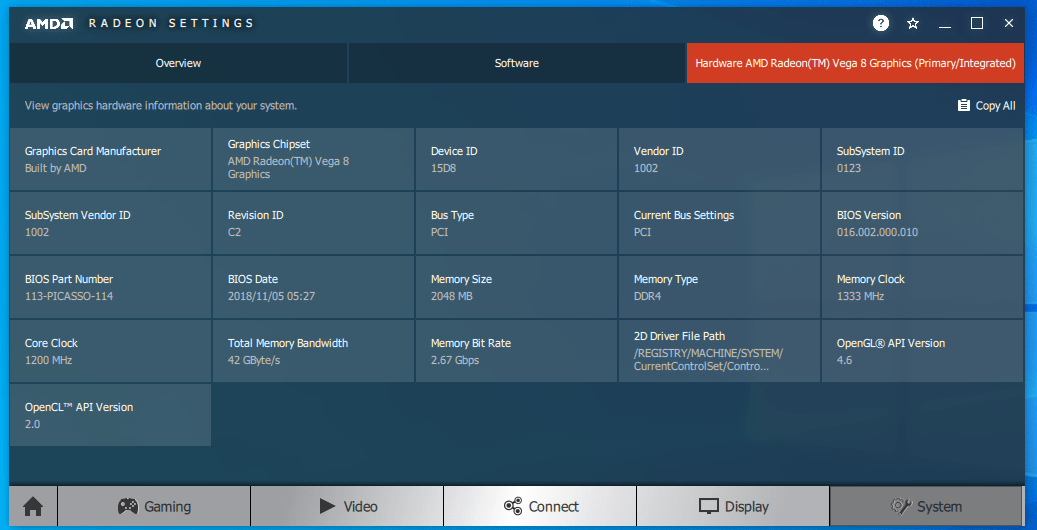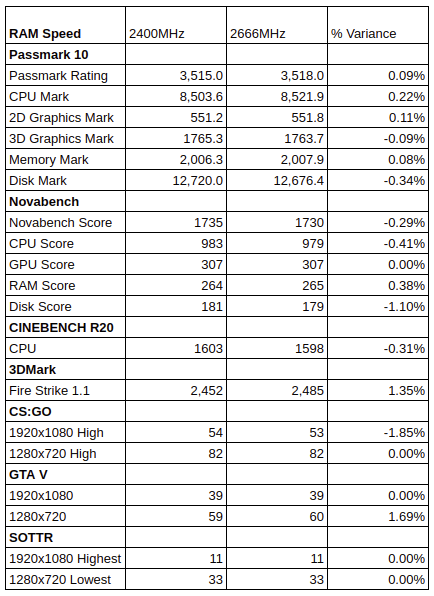Whilst Windows mini PCs have traditionally used Intel processors similar small form factor (SFF) devices using AMD based processors have recently been announced and Beelink is amongst the first manufacturers to deliver one with their newly released GT-R mini PC. Available as a barebones device and in various configurations Beelink sent a fully configured model for review.
Hardware overview
The Beelink GT-R is a slightly larger mini PC physically consisting of a 168 mm x 120 mm x 39 mm (6.61 x 4.72 x 1.54 inches) rectangular metal case with a plastic top. It is an actively cooled mini PC that uses a (previous generation) Zen+ microarchitecture 12 nm Ryzen 5 3550H mobile processor which is a quad-core 8-thread 2.1 GHz processor boosting to 3.7 GHz with Radeon Vega 8 Graphics. The front panel has a power button, two 3.0 USB ports, a headphone jack, and a Type-C USB port that supports video. Also on the front panel is an ‘RTC Key’ button that when pressed clears the CMOS. Either side on the front panel has a small pin-hole for microphone input. The rear panel includes the power jack, dual gigabit Ethernet ports, dual HDMI ports, a full-sized DisplayPort, and a further four 3.0 USB ports. The top panel includes a fingerprint reader and internally there is also WiFi 6 (or 802.11ax).
Inside the mini PC there is support for a 2.5” drive (1TB WD Blue HDD in the supplied model):
and if the four screws marked ‘M2*4’ are removed, access is provided to two SODIMM DDR4 memory slots (2 x 8GB 2666 MHz Hoodisk RAM sticks in the supplied model) and two M.2 2080 slots. One of which one supports NVME (a no-name 512GB SSD in the supplied model) the other being SATA 3 only:
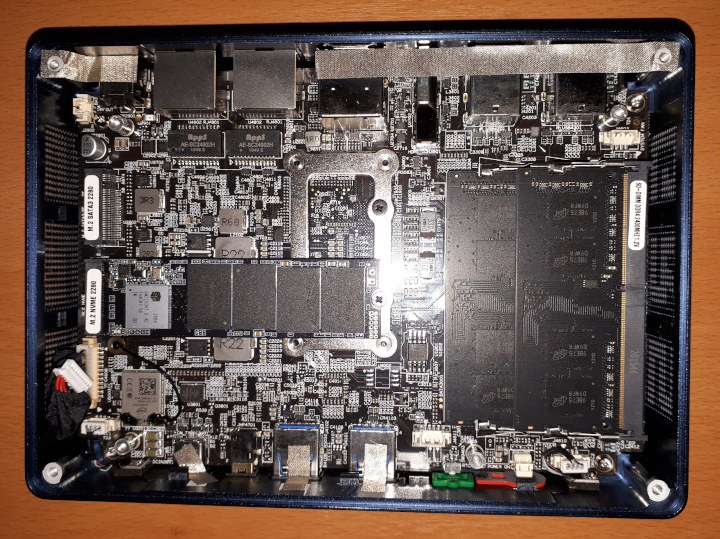
The underside of the removable drive tray includes two pre-applied thermal heat pads:
Box contents
In the box you get the power adapter and cord, a couple of different lengths HDMI cables, an installation guide and a manual, a mounting bracket together with screws for attaching the device to behind a monitor.
You also get a 16GB USB:
which is actually a bootable USB drive containing Windows 10:
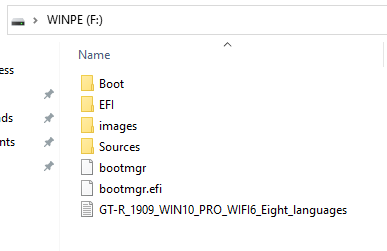
Review methodology
When reviewing mini PCs I typically look at their performance under both Windows and Linux (Ubuntu) and compare against some of the more recently released mini PCs. Specifically, I am now reviewing using Windows 10 version 2004 and Ubuntu 20.04 LTS and test with a selection of commonly used Windows benchmarks and/or equivalents for Linux together with Thomas Kaiser’s ‘sbc-bench’ which is a small set of different CPU performance tests focusing on server performance when run on Ubuntu. I also use ‘Phoronix Test Suite’ and now benchmark with the same set of tests on both Windows and Ubuntu for comparison purposes. On Ubuntu, I also compile the v5.4 Linux kernel using the default config as a test of performance using a real-world scenario.
Prior to benchmarking, I perform all necessary updates and/or installations to run the latest versions of both OSes. I also capture some basic details of the mini PCs under review for each OS.
Windows performance
Initially, the GT-R comes installed with a licensed copy of Windows 10 Pro version 1909. After upgrading to version 2004 and removing the old Windows installation (25.1 GB) a quick look at the hardware information shows it is aligned to the specification:
I then ran my (2020) standard set of benchmarking tools to look at performance under Windows:
As the review unit included an HDD I also ran CrystalDiskMark on it:
For my specific set of Phoronix Test Suite tests the results were:
All these results can then be compared with other recent mini PCs:
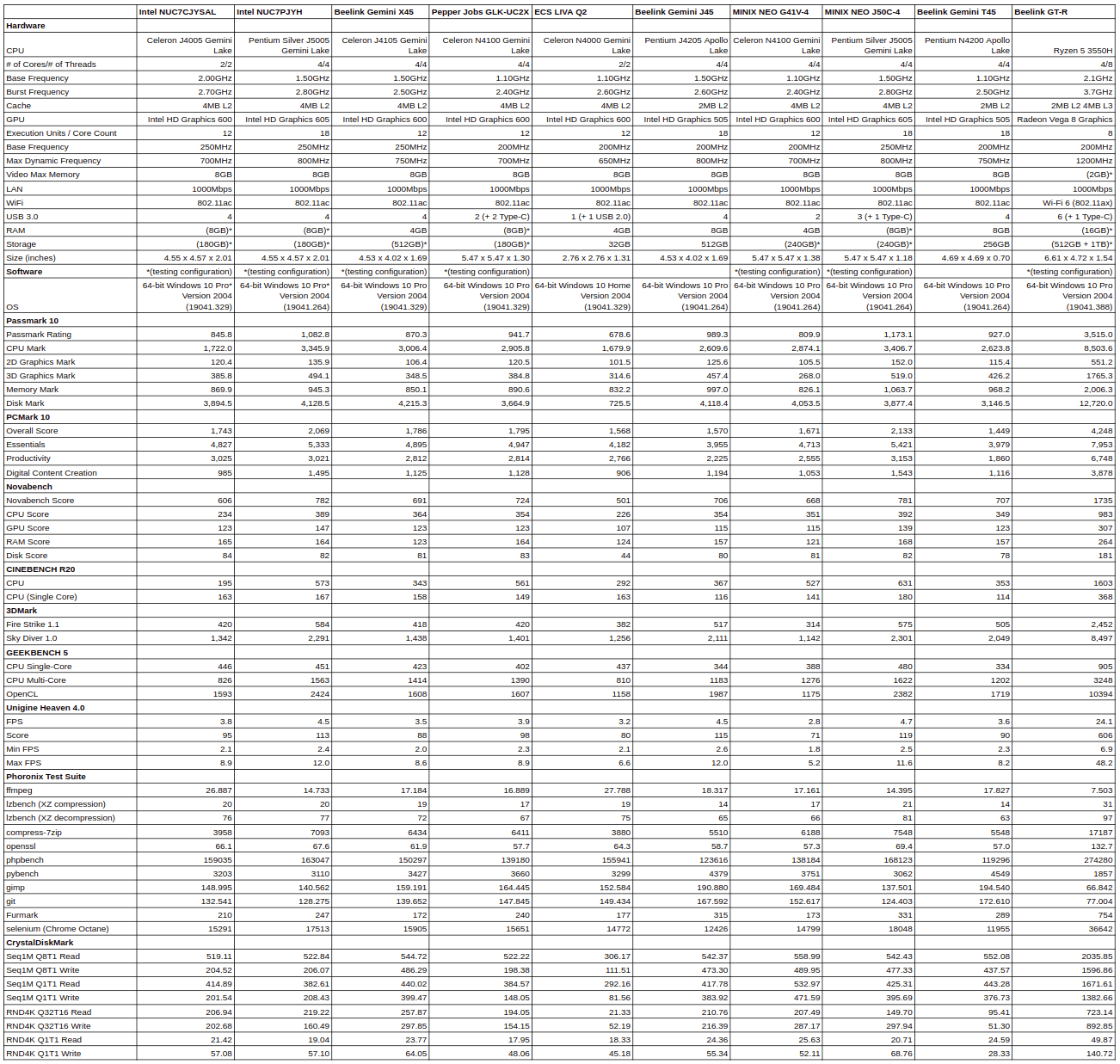
As can be seen, the Beelink GT-R mini PC is in a different league to earlier low-powered Intel mini PCs. Contributing factors include the eight threads and higher boost clock, the NVME SSD performance, and the inclusion of the Vega graphics.
Ubuntu performance
After shrinking the Windows partition in half and creating a new partition I installed Ubuntu using an Ubuntu 20.04 ISO as dual boot. After installation and updates, a brief check showed everything working including Wi-Fi, Bluetooth, audio, and Ethernet. The key hardware information is as follows:
I then ran my Linux benchmarks for which the majority of the results are text-based but the graphical ones included:
And for the same set of Phoronix Test Suite tests the results were:
The complete results together with comparison against other recent mini PCs are:
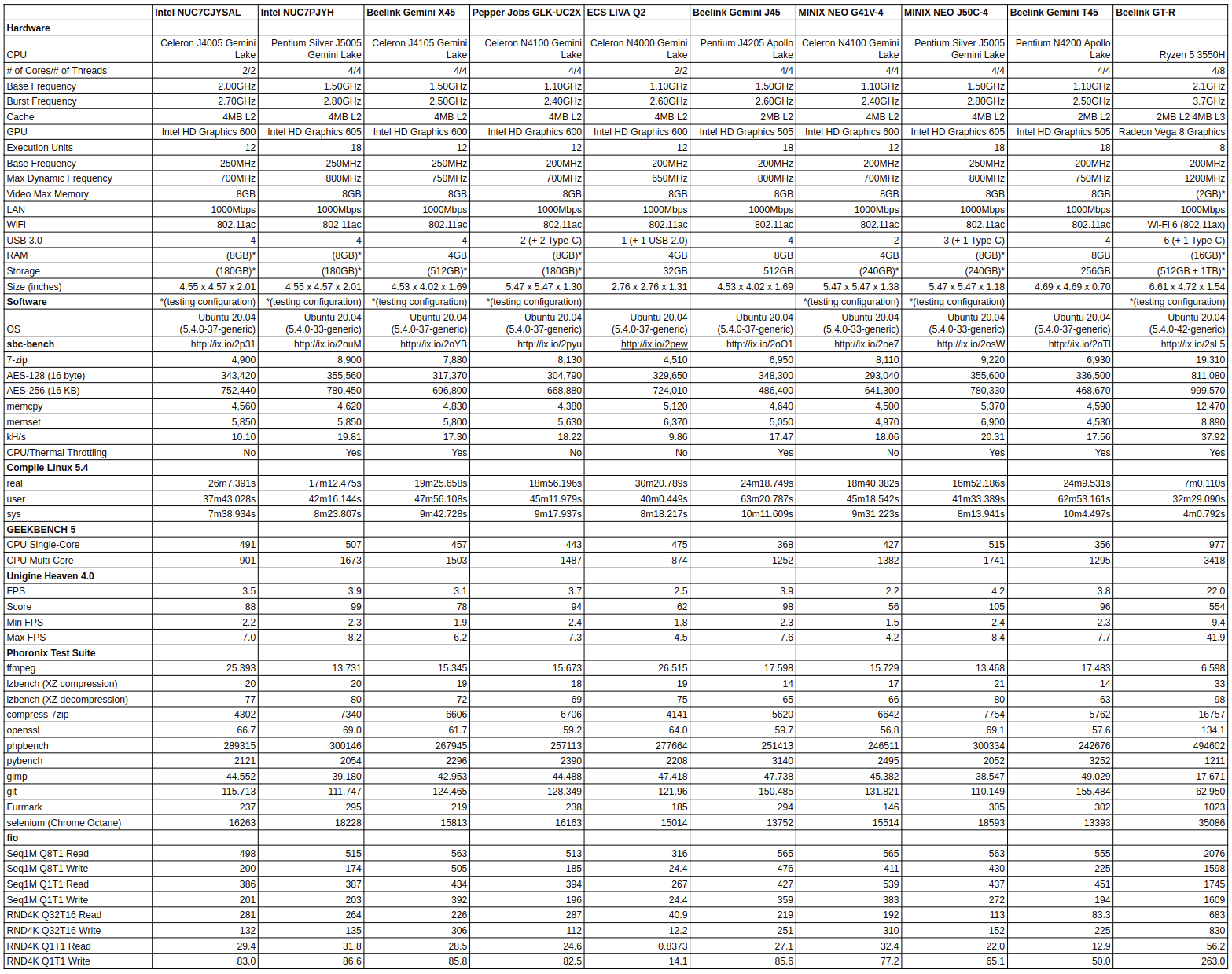
Again the performance greatly exceeds the earlier low-powered Intel mini PCs and the time for compiling the Linux kernel highlights this showing a significant improvement in the total time taken.
Video Playback in Browsers & Kodi
For real-world testing, I played some videos in Edge, Chrome, and Kodi on Windows and in Firefox, Chrome, and Kodi on Ubuntu. The following tables summarise the tests and results for each of web browsing, Kodi in general and Kodi playing specific videos:
I was somewhat surprised that 4K 60fps videos dropped frames when played in browsers so I tested my internet speed which reflected my NBN plan of 100/20 ruling out any internet interruptions:
I also tried playing an 8K video in Kodi on both OS. In Windows there was no video only audio output:
whereas in Ubuntu 20.04, there was both sound and picture but although the video played it was not smooth suffering from judders when skipping frames:
In both cases, software was used for decoding resulting in very high CPU usage.
Beelink GT-R Gaming
As can be seen from the above Unigine Heaven scores gaming is possible. I tested three games under Steam in Windows (Counter-Strike: Global Offensive, Grand Theft Auto V and Shadow Of The Tomb Raider) at two resolutions (1920×1080 and 1280×720) and with lowered settings when necessary to get the best possible framerate:
Which can be summarised as:
I also played the same games on Ubuntu using Steam with Proton 5.0 and the frame rates were similar. I relied on Steam’s in-game FPS counter as I did not have tools equivalent to MSI AFterburner/Rivatuner available. However this can be visually verified with the in-game benchmark from Shadow Of The Tomb Raider:
Networking
Network connectivity throughput was measured on Ubuntu using ‘iperf’:

Thermals
As previously mentioned the GT-R uses active cooling and actually has a dual-fan configuration to assist with heat dissipation. Although the device didn’t become hot to touch, the fans were rather noisy at times. During benchmarking the maximum temperature I recorded on the top of the device was around 22°C in the back left corner and around 30°C in the front right corner with an ambient room temperature of 15.5°C. The loudest the fan became during the benchmarking was 45.2 dBA compared to 32.2 dBA when it was not running. However, when gaming the fan noise increased and measured up to 54.0 dBA.
Running a stress test on Ubuntu 20.04 saw the CPU temperature start at 26°C where it rose quickly to 60°C when the fan started (measured at 43 dBA) and the temperature dropped to 58°C. After approximately six minutes the CPU temperature dropped to 54°C (most likely due to thermal limits and therefore thermal throttling) and the fan became intermittent, switching on at 55°C then off at 54°C and the temperature then remained hovering. The test was interrupted after approximately fifteen minutes given everything appeared stable and the CPU temperature dropped immediately to 36°C and then slowly down to 30°C after a further four minutes:
The spike seen in the temperature during cooling was when I took an earlier screenshot (not shown here).
So the fans do their job and there are air-vents on the bottom of the device in a pattern of the letters ‘GTR’:
and on each of the sides as well as along the top at the back.
A nice touch about the base is that the screws are readily accessible and not hidden by rubber feet (or strips in this case). Also, there is a rubber pull-tab (bottom left of picture) to easily remove the base once unscrewed together with a helpful reminder printed on the case of what keystrokes to use to enter either the BIOS or bring up the boot menu.
The sides are particularly interesting as the air-vents pattern reads “GR5”:
According to Beelink they originally considered launching two products: this one based on the Ryzen 5 3500U and another based on the Ryzen 7 3700U with possible product names of GT-R5 and GT-R7. However, after finding that the performance of the 3700U was not much different to the one of 3550H they didn’t follow-up with releasing the GT-R7.
Power
Power consumption was measured as follows:
- Powered off – 0.9 Watts
- BIOS* – 24.1 Watts
- Boot menu – 22.5 Watts
- Idle – 9.6 Watts (Windows) and 8.3 Watts (Ubuntu)
- CPU stressed – 52.9 Watts then drops to 45.2 Watts (Ubuntu)
- Video playback** – 32.7 Watts (4K in Windows) and 31.5 Watts (4K in Ubuntu)
* BIOS (see below)
** The power figures fluctuate so the value is the average of the median high and median low power readings.
This is higher than the earlier Intel mini PCs and reflects the increased TDP of the processor.
BIOS
The BIOS settings are mostly visible and unlocked with the exception of GPU settings. A brief overview is available in the following video:
Overclocking
Similar to Intel’s Extreme Tuning Utility being restricted to specific Intel CPUs, AMD’s Ryzen Master does not support the 3550H:
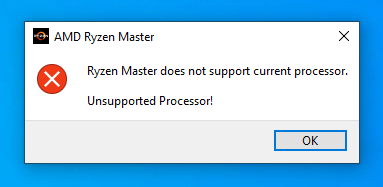
However, I did notice that the included memory was capable of running at 2666 MHz even though it was currently only running at 2400 MHz by default:
It is possible to overclock the memory by manually setting the clock speed in the BIOS:
This change can be verified in a number of ways, for example, running GPU-Z before and after the changes:
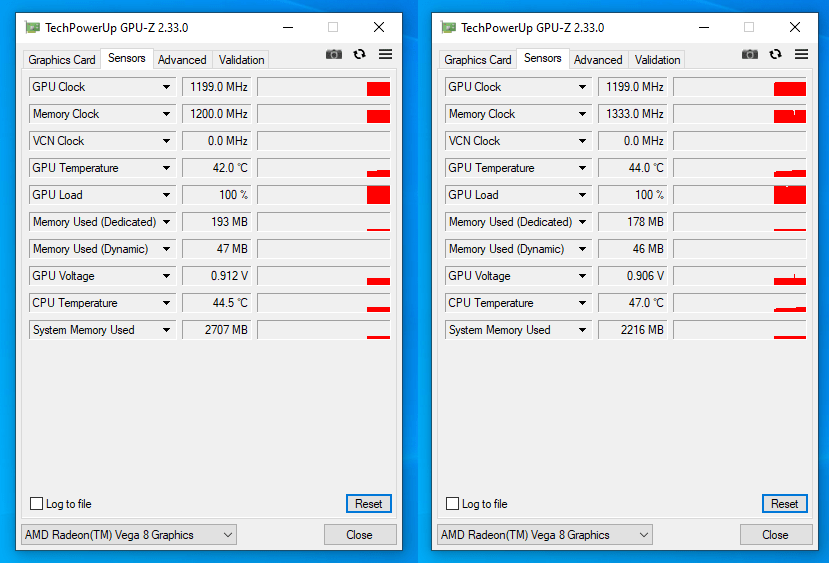
or by running the ‘AMD Radeon Setting’ application:
In Ubuntu 20.04 the memory speed can be checked by running the command sudo dmidecode --type 17 and then looking at the ‘Configured Memory Speed’ as opposed to ‘Speed’. For example, before changing the clock speed in the BIOS it showed as:
Having set the speed to 1333MHz, I then repeated some benchmarks and re-ran the games in Windows. However, there was no improvement and the results were effectively the same given the margin of error between runs:
It was only after opening the device (see the above pictures) and seeing the text ‘SO-DIMM DDR4 2400MHZ 1.2V’ printed on the underside of the drive tray and on a sticker on the memory slots that I checked AMD’s product page for the processor where it clearly states “System Memory Specification: 2400MHz”. So no overclocked memory for me!
The power limits can be seen in Windows as:
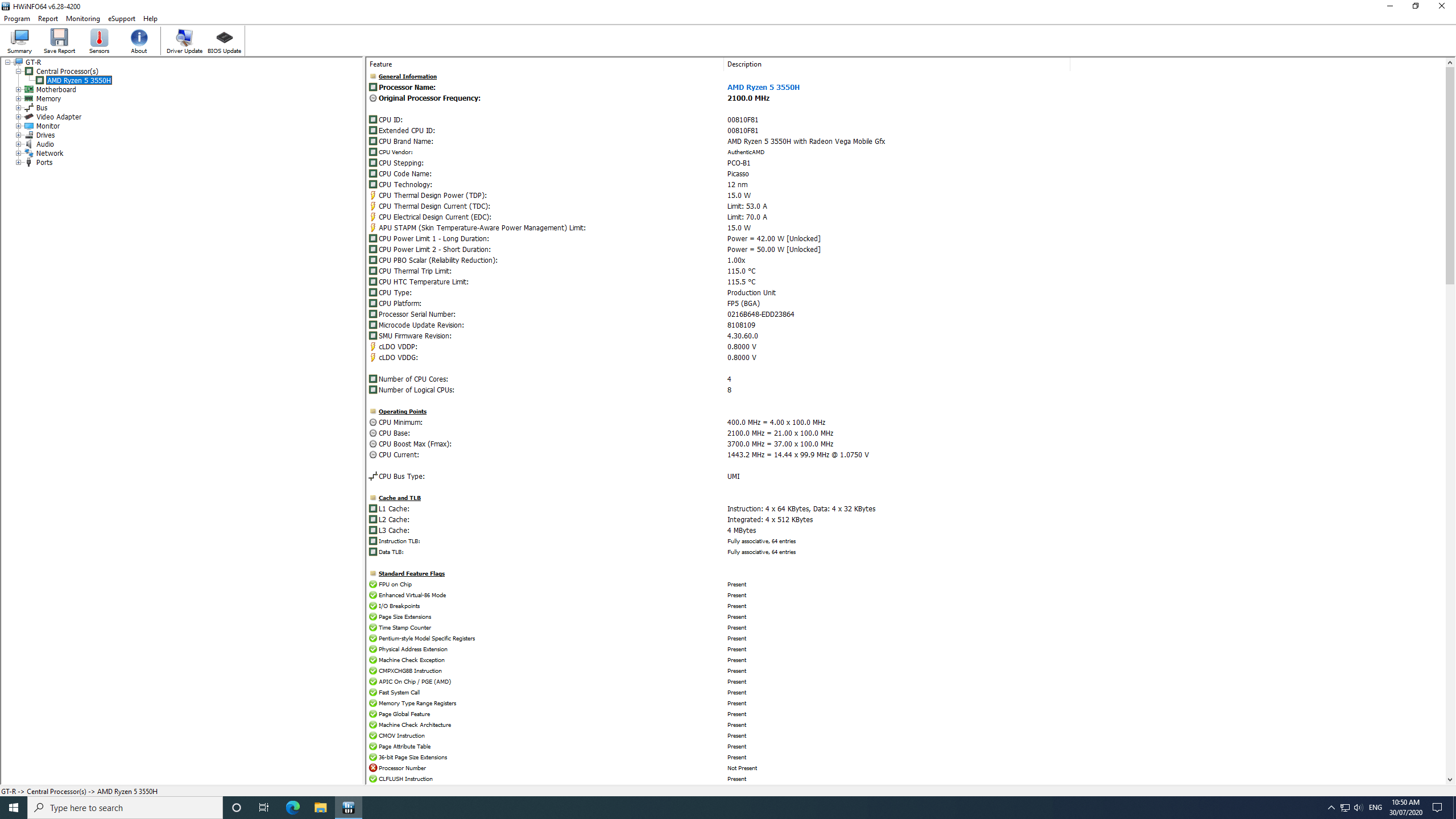
It may be possible to improve the performance by increasing the POR configuration from the default of 35 W to something higher, however, the CPU temperature will almost certainly increase and the performance gain might be quite small and not worth the extra noise the fans are likely to make.
Final observations
One issue I did encounter both in Windows and in Ubuntu was that my 4-port KVM was not properly recognized. I did get a rather poor HDMI signal to the monitor however the USB port was not working and by extension neither were my wireless keyboard and mouse. However, using a USB-C hub (2 x USB 3.0 and 1 x HDMI) worked fine as did using the various HDMI and USB ports directly including wirelessly connected peripherals.
Another point to note is that the power cord from the device to the power adapter is slightly shorter than most and the power adapter itself is quite large meaning care needs to be taken when using a US/EU to AU adapter for example.
Overall this is a powerful mini PC (relative to similar form factor devices but excluding the higher-end Intel NUCs and comparable models) and the addition of capable graphics makes gaming possible together with light video editing. Equipped with a very good selection of ports and features including multiple configurable storage options, the GT-R makes a great impression as one of the first AMD based mini PCs. The only neative is that the fans are quite noisy when the processor is under load.
Geekbuying has the barebones model for $399.99 with prices going up to $609.99 for the fully configured version like this review model. Gearbest and Banggood are similarly priced.
Beelink also has plans for an upgraded version called the GT-R Pro and has officially started crowdfunding on Indiegogo where you can buy the GT-R Pro at a lower price than the GT-R although limited to the first 200 backers.

Ian is interested in mini PCs and helps with reviews of mini PCs running Windows, Ubuntu and other Linux operating systems. You can follow him on Facebook or Twitter.
Support CNX Software! Donate via cryptocurrencies, become a Patron on Patreon, or purchase goods on Amazon or Aliexpress


